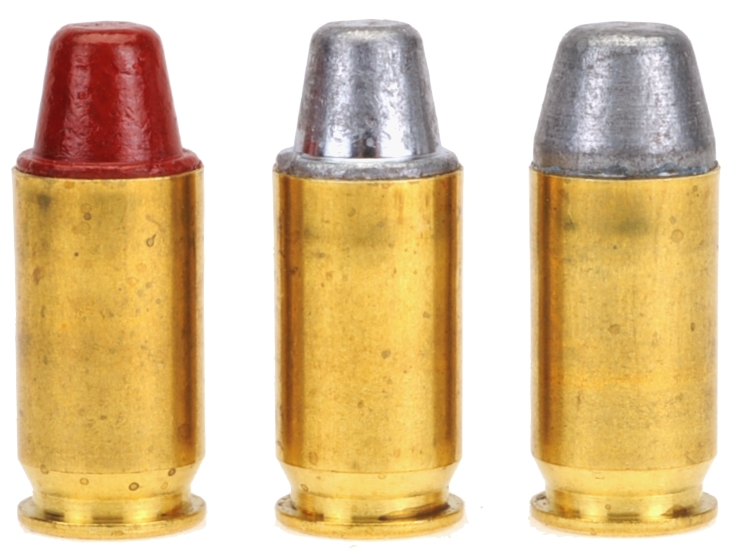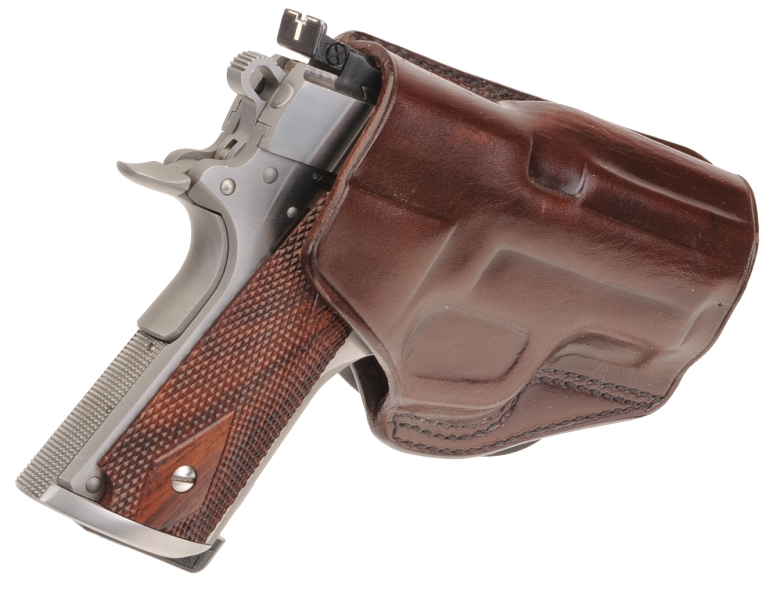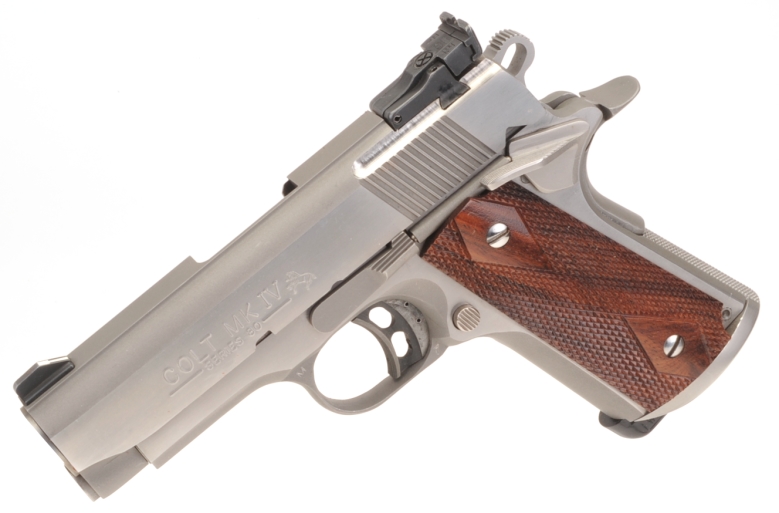I will leave the roles of Alaskan homesteader and subsistence hunting to others who actually live those realities. Rural living, at least in my area, is certainly not the same. Anytime a person lives within an hour round trip to a Hannaford, they are not in a survival setting. For those who truly are, they certainly have my respect.
My area is populated mostly by people living on larger tracts of wooded land; steep grades, lots of granite underpinning. There is a good deal of wildlife, for people with the patience to look: deer, coyote, bobcat fox, lots of birds and assorted small mammals. Infrequently, black bear and wandering moose, a population that sharply increases moving west and north.
Our small town has fire and rescue service, but no police department, which places home security with the county sheriff’s department and the individual resident. A natural setting for firearm ownership. No different than having a fire extinguisher, a person can go twenty years without needing it, but it only takes one incident to justify possession.
These days, when I walk property, I wear a handgun on my belt because I don’t know what I might encounter and it costs me nothing to have its assurance.
Personal choices
Looking at firearm reviews can be pretty confusing, especially when the application is not specified. “Which is better, a 45 Auto or the 9mm Luger?”. To do what? “Is the 380 Auto adequately lethal?”. Under what circumstances? “What is the best concealed carry handgun?”. Where would you be carrying and what would you be wearing? See what I mean?
My solution to carry, concealed or open, are a number of different firearms, each an acceptable compromise to fit a particular circumstance. Each firearm must meet two criteria; a comfortable fit for the anticipated situation so it would not be left behind and sufficient power and capacity for the same.
Sometimes the answer is a micro 9mm Luger, sometimes a 357 Mag revolver, sometimes a 45 Auto as in the case of trail carry. None of these are a recommendation. All are personal selections that meet the two criterias and each fits specific circumstances. I like firearms, so there is a good deal of redundancy.
Colt 1911 – Browning’s finest…
An old and well worn 1911 Officer’s Model. A bit custom: match barrel, adjustable sights, mag well, two piece guide rod, tool fire control pieces, lightweight trigger, heavy recoil spring, refined parts fit, 3.5 lb trigger with zero creep. When selected for this project, it was set up for 45 Super. A recoil spring change was made to22 lbs, for +P ammo, the rest remained unchanged.
The pistol had been stowed while a Ruger GP100 357 Mag took its turn for trail carry. Subsequently, the Colt was disassembled and cleaned of heavier storage lube and properly prepped. I pulled the slide off and just mentally blanked at pulling the recoil spring and barrel, until I remembered it had a two piece guide rod. Duh? The gun has a lot of sharp machined and stoned surfaces, so my hands look like the losing end of a Viking raid. I need an update plan for that pistol.
45 Automatic +P Cast Bullet Handload Data… and really big ammo
There were five bullets originally selected, however, the first two on the left were dropped as not suitable for the application. Left to right, both the Speer Gold Dot 185 grain and Remington Golden Saber 185 grain are terrific for concealed carry, but they are quick expanding, shallow penetration bullets that stop in ballistic gel between 11″ and 13″. The hard cast may slightly deform at termination, but they won’t expand, and they can blow through 32″ of ballistic gel. The .45 caliber wound channel doesn’t really need expansion.
Warning: Bullet selections are specific, and loads are not valid with substitutions of different bullets of the same weight. Variations in bullet length will alter net case capacity, pressure and velocity. Primer selection is specific and primer types are not interchangeable. These are maximum loads in my firearms and may be excessive in others. All loads should be reduced by 5% as a starting point for development where cartridges have greater than 40 grains in capacity and 10% for cartridges with less than 40 grain capacity following safe handloading practices as represented in established mainstream reloading manuals. Presentation of these loads does not constitute a solicitation for their use, nor a recommendation.

| Cartridge: 45 Automatic +P |
|
| Firearm | Colt Officer’s Model |
| Barrel Length | 3.5″ |
| Min – Max Case Length | 0.898″ +0.0″/-0.010″ |
| Min – Max Cartridge Overall Length* | 1.190″ – 1.275″ |
| Primer | CCI 300 – Large Pistol |
| Bullet Diameter – Jacketed** |
0.4520″ +0.0″/-0.003″ |
| Reloading Dies | RCBS/Lee |
| * Min-Max Cartridge Overall Length Match SWC 1.140″ – 1.255″ ** Bullet Diameter Cast 0.4530″ +0.0″/-0.003″ |
|
| Bullet Type | Bullet Weight Grains |
Net H2O Grains Capacity |
COL” | Powder Type | Powder Charge Grains |
Muzzle Velocity fps |
Muzzle Energy ft/lbs |
50Ft 5 Shot Group” |
| Acme Hard Cast SWC NLG | 185 | 15.0 | 1.245 | Accurate No. 7 | 12.7 | 1054 | 456 | 2.1 |
| Acme Hard Cast SWC NLG | 185 | 15.0 | 1.245 | Alliant Unique | 7.8 | 1049 | 452 | 2.3 |
| Acme Hard Cast SWC | 200 | 12.7 | 1.245 | Accurate No. 7 | 11.2 | 985 | 431 | 1.9 |
| Acme Hard Cast SWC | 200 | 12.7 | 1.245 | Alliant Unique | 6.8 | 988 | 434 | 1.7 |
| Acme Hard Cast FP | 225 | 14.1 | 1.245 | Accurate N0. 7 | 11.5 | 957 | 458 | 2.0 |
| Acme Hard Cast FP | 225 | 14.1 | 1.245 | Alliant Unique | 7.0 | 954 | 455 | 2.3 |
A few things…
Yes, the heavier 225 grain bullet does take more powder than the 200 grain. Based on bullet length and seating depth, the net case capacity is greater than the 200 grain. Larger net case volume reduces pressure compared to a case with less.
Overall cartridge length across all three loads was 1.245″ While the ogives are different in form, they are the same length with bullet weight moderated by shank length. Using a flat nose seating plug, the seating/crimping die required no adjustment within the three bullet types.
The bullets are all 92-6-2 alloy hard cast…BHN 16. The 185 grain bullets are Hi-Tek coated, the others use Magma Engineering blue lube. I have a firm load development policy of using coated bullets where velocity exceeds 1000 fps. Not really. Maybe I just have good barrels in my firearms but leading has not been a problem. When using the Hi-Tek coating, a couple of steps are added to the assembly process.
My 45 Auto pistols have match grade barrels and tight chambers. The SAAMI cast bullet bullet spec is 0.001″ larger than jacketed, and sometimes cast bullets measure even more. So all cast bullets are run through a Lee 0.451″ sizing die and assembled ammo is run through a Lee factory cartridge crimp die. The 45 Auto factory crimp die taper crimps and sizes the finished round to spec., < 0.473″ at the case mouth. Combined, 100% reliable cycling, narrow fps variation round to round and improved accuracy.
Two approaches to powder were taken, fast burning and not so much. I usually select the slowest powder as it usually yields the highest velocity, even in short barrels. Slow powder minimizes the effects of scale 1/10th grain variances as a smaller percentage of a larger powder charge. Fast powder was also used as a more economic solution but, no, not a faster result in short barrel guns.
The brass was new… Winchester, case head stamped +P. It is always a good idea to use the correctly marked ammo.
It is my understanding that the 45 Auto, from social media sources, is an anemic, obsolete cartridge that is marginal for rabbit hunting. But, then, I heard Joe Biden was president. It’s a crazy world out there and anything is possible. That said…
I would not pick up a 45 Auto as a first choice to go deer or black bear hunting. The combination’s range is limited by bullets with the ballistic coefficient of a barn door and relatively low muzzle velocity. Up close, it relies on a big diameter, non-expanding bullet for exceptional penetration.
I do not doubt the 45 Auto would be effective on any Maine wildlife in a defensive situation. I would not mind hog hunting with this combination and leaving a rifle at home. It is just a high mileage old gun, comfortable enough to not leave at home.




Hi I have a Springfield V16 in 45 Super I use for the same purpose. I shoot Buffalo Bore 45 Super 255g hardcast at 1100 fps. Recoil is minimal, it’s easy to carry and familiar as well. Nice article!
I carry a gp100 44 special or 10 mm xdm
Gp100 is becoming my favorite
Looking at a gp100 357
Before the days of the “,45 Super”, I modified a 1911A1 with a heavier recoil and trigger spring, plus a flat-bottomed (unradiused) firing pin stop. Using 7.2/Unique/200 gr. LSWC, I obtained 1061 f/s 10′ from the muzzle. The same load, using a 230 gr. RNFP, clocked just over 1000 f/s. Both rounds shot flat, hit hard, and were quite accurate. The 200 gr. load dropped two Oklahoma white tails at a measured 54 and 58 yards. Both were DRTs. The 230 gr. RN load demonstrated considerable penetration, so it would be my choice for bear defense in .45 ACP. Less robust aggressors, especially of the 2-legged variety, could be assured a 2-for-1 deal on bullet holes, one in, and one out.
Had I been aware of the 230 gr. TC projectiles then, I would certainly have tried them. I would guess that, at similar velocity, the projectile would penetrate less than the LRN, but only slightly less.